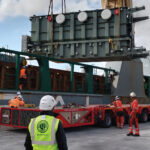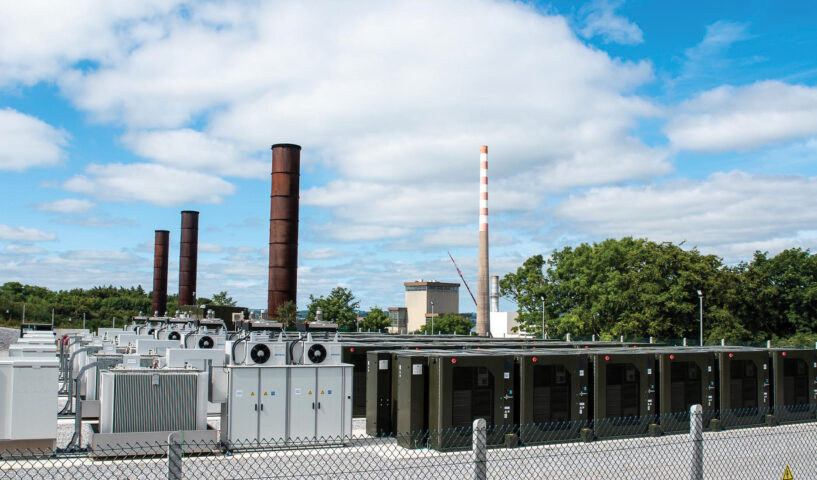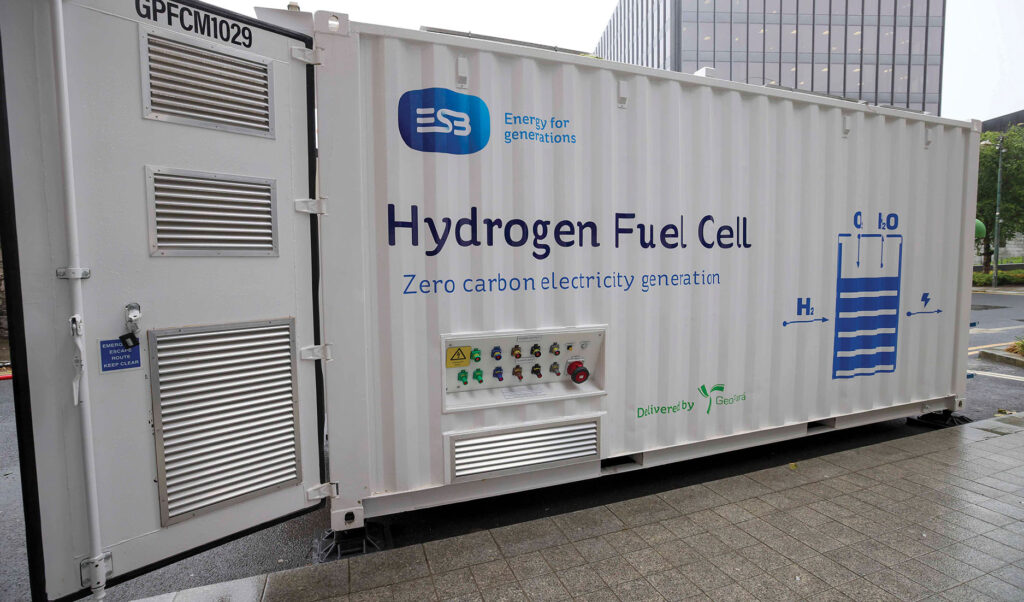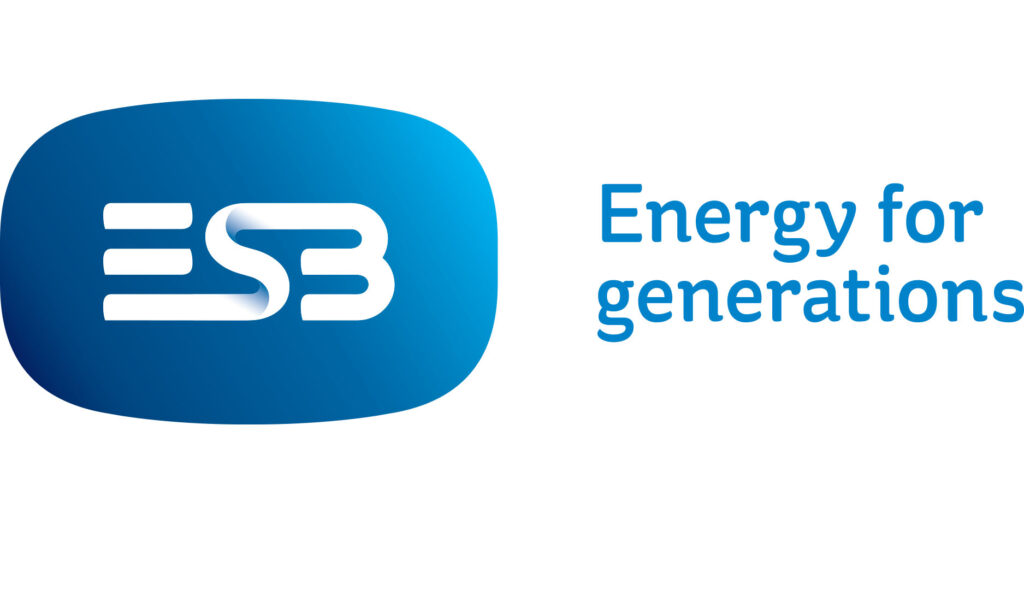
How storage can fill the supply gap
13th October 2025
Driving Ireland’s energy future with specialist logistics expertise
13th October 2025From milliseconds to months: Building a resilient energy storage ecosystem

ESB Battery Energy Storage System (BESS) facility in Aghada, County Cork.
The vision for Ireland’s future energy system sees us harnessing our natural resources to generate home-grown clean electricity. Yet replacing fossil fuels with renewable energy from wind or solar also presents new challenges.
First, the need to keep power flowing even on calm or cloudy days. And second, the variable nature of renewables can lead to fluctuations in power system frequency and voltage – meaning measures must be in place to maintain safe, stable system operation.
Energy storage offers a solution on both fronts. Storage underpins ESB’s drive to achieve net-zero carbon emissions by 2040, providing the flexibility and resilience needed for a fully decarbonised grid. Delivering on this potential requires both investment in proven assets like utility-scale batteries, and unlocking innovative technologies such as iron-air batteries and hydrogen storage in depleted gas fields.
“Storage is absolutely essential in a net-zero electricity system,” explains Fergal Downes, Energy Storage and Flexible Technologies Manager at ESB. “Not only will storage solutions support stability and security of supply, they will also allow us to integrate ever more renewables onto the system and maximise the use of wind and solar energy. At ESB, we are engaged in developing a pipeline of all energy storage durations to meet requirements ranging from milliseconds to months.”
System stability: where every (milli)second counts
Short-term storage operates at the level of seconds or fractions of a second. System stability is the name of the game here, with these technologies kicking in within milliseconds to maintain the flow of power in response to sudden changes in electricity supply or demand.
Lithium-ion battery energy storage systems (BESS) deliver a tried-and-tested means of meeting these requirements. They can absorb excess power generated by renewables and release it rapidly as needed for frequency regulation and voltage support. ESB is Ireland’s leading BESS developer, and its battery portfolio is now one of the largest in Europe. “We currently have 304MW of two-hour batteries across four sites in Dublin and Aghada, Cork,” Downes points out. “Our plan is to have multiples of this in place by 2040, with over a gigawatt pipeline of battery investments in the years ahead.”
Another key technology for short-term system balancing is the synchronous compensator. While they do not generate electricity, these devices’ large rotating flywheels store kinetic energy and can release it almost instantaneously to support the system when required. In 2022 ESB invested €50 million to install Ireland’s first synchronous compensator with the world’s largest flywheel at Moneypoint Power Station.
Balancing supply and demand across the day
Short-term storage technologies are essential for maintaining grid stability, but the ability to store energy for hours or days unlocks further value for the power system. By shifting excess renewable generation to periods of peak demand or low supply, these solutions enhance flexibility and minimise cost to customers.
BESS can deliver this over shorter periods, with ESB’s lithium-ion battery cells capable of storing up to two hours of energy. Another long-standing solution is pumped hydropower, which has been deployed at ESB’s Turlough Hill station for over 50 years. Excess renewable energy is used to pump water from a lower to upper reservoir, which can be released to power generation turbines when the system needs it most.
The next phase of storage buildout is expected to focus on longer durations, and a huge amount of innovation is underway in this space. “ESB is involved in multiple projects and partnerships to assess emerging technologies with potential for Ireland,” explains Downes. “These include flow batteries with duration of 4 to 24 hours, CO2 batteries for 8 to 12 hours, and thermal energy storage for up to 24 hours.” Iron-air batteries go even further: by using reversible rusting (oxidisation) of iron to store and release electricity, the technology can deliver a duration of up to 100 hours. FuturEnergy Ireland – a joint venture between ESB and Coillte – recently secured planning permission to build Europe’s first iron-air battery facility near Buncrana, County Donegal.
The role of storage in balancing renewables and ensuring security of supply has been recognised in the Government’s Electricity Storage Policy Framework. “It is important that the framework is implemented along with market systems and network charging arrangements, so that customers can fully benefit from energy storage on the network,” underlines Downes.
Solving for seasonal storage
In the fossil era, Ireland’s security of supply relied on stockpiles of coal, peat and oil. In a renewables-led system, true resilience will depend on storing energy at scale – going far beyond daily balancing to provide the deep reserves needed to keep the power system secure through extended periods of low wind or solar generation. As Meadhbh Connolly, Future Opportunities Manager at ESB explains: “We are moving from stockpiles of fossil-fuel to stores of clean molecules. Renewable hydrogen – stored as gas underground and as innovative liquid electrofuels in tanks – will give Ireland the scale of storage needed to back up the power system during multi-week lulls in wind and solar.”
ESB is at the forefront of Ireland’s green hydrogen pathway. In 2024 the company delivered the country’s first hydrogen-to-electricity demonstration using fuel cells, and it is developing a demonstration-scale hydrogen production facility at Aghada, County Cork. Through the Kestrel partnership with Bord Gáis Energy and dCarbonX, ESB is also exploring options to redevelop the decommissioned Kinsale gas reservoirs for largescale underground hydrogen storage. “Long-term molecular storage would complement the Government’s proposed floating storage and regasification unit (FSRU) and strengthen security of supply while supporting the energy transition,” comments Connolly. “This is particularly relevant given the reduction in storage following the correct, climate-aligned decision to close coal, oil, and peat stations.”
A supportive framework
Connolly concludes: “As the technology continues to evolve, it will be important to also assess the regulatory environment and ensure the right market arrangements and incentives are in place to encourage new investments and efficient integration within the system.
“As power generation becomes increasingly decarbonised, expanding Ireland’s storage infrastructure in lockstep with our renewables will ensure a resilient, secure and reliable supply of energy in the decades ahead.”
Contact:
T: +353 1 676 5831
W: www.esb.ie


